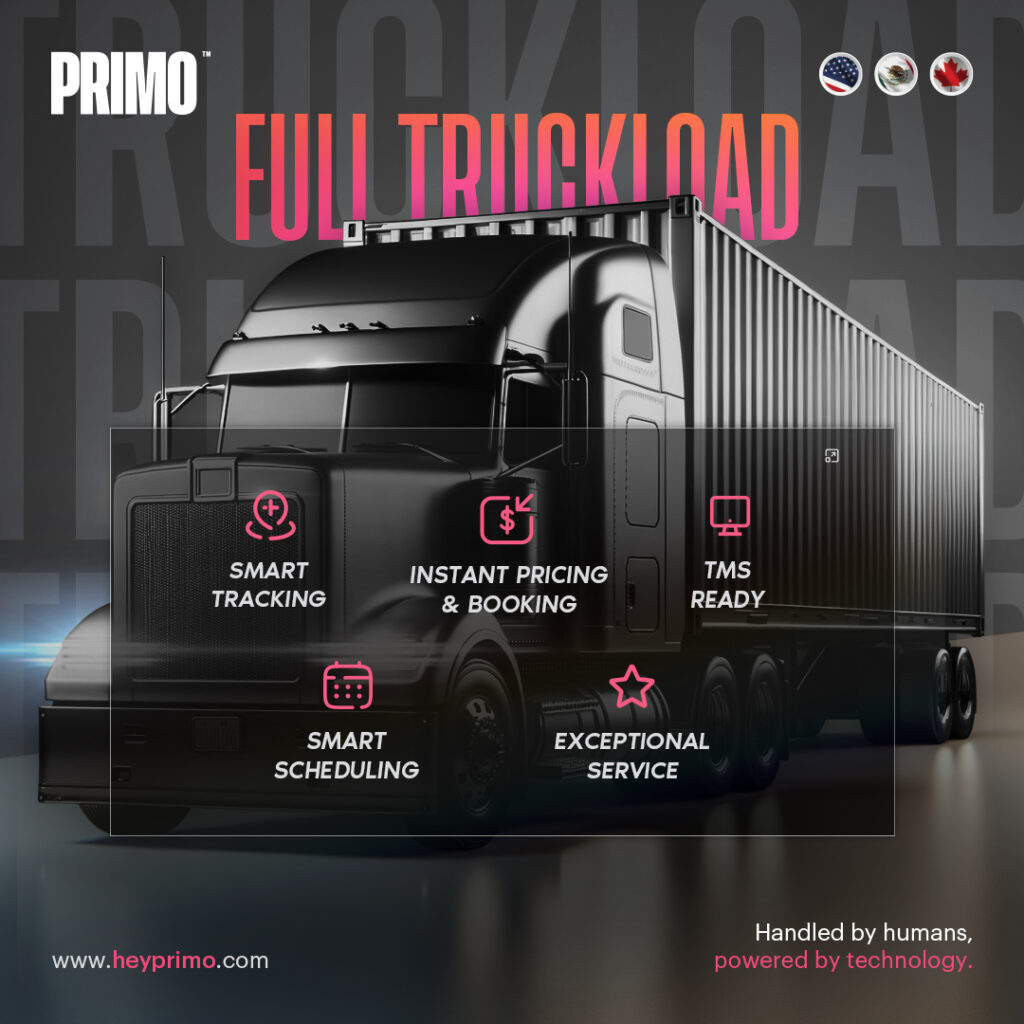
FTL is ideal for large shipments, offering direct routes and minimal handling. LTL, on the other hand, suits smaller shipments, saving costs by sharing truck space. Regardless, trucking forms the lionshare of shipments across North America, asserts the American Trucking Associations. Specifically, there were “11.46 billion tons of freight (primary shipments only) transported by trucks in 2022, representing 72.6% of total domestic tonnage shipped.” Across international borders with Canada and Mexico, “Trucks transported 61.9% of the value of surface trade between the U.S. and Canada in 2022. Trucks transported 83.5% of the value of surface trade between the U.S. and Mexico in 2022.” With so much at stake, it’s important to understand the fundamental value of FTL shipping and a few steps for making it successful.
Effective freight management in the logistics sector for trucking means understanding the basics of full truckload (FTL) and when to use it. Now, FTL is about efficiency and security and typically offers direct routes, reduced transit times, and minimal handling, which lowers damage risk. Efficiency in FTL shipping hinges on strategic planning and technology, and it’s these functions that effectively yield freight cost savings. But still, that doesn’t mean that your only need is to pick a random carrier. Let’s take a closer look at the core steps to mastering truckload capacity utilization and success.
A Transportation Management System (TMS) is crucial to success in FTL. An integrated TMS enables real-time tracking and data-driven decisions. This can mean rerouting around bottlenecks or choosing the best shipping times.The right TMS should also enable cross-border freight management, which can open new avenues for efficiency and growth. TMS platforms enable data analytics for route optimization and advanced carrier comparison.
The right carriers make a difference. Prioritize reliability and service quality to mitigate disruptions. A diverse carrier network provides flexibility, essential for adapting to challenges like demand surges or capacity issues. Delving into their experience in truckload services to glean insights into selecting the best carriers based on your specific needs. Further, choose carriers based on their reliability and service quality, not just cost. Evaluate carriers’ track records, capacity, and flexibility to ensure they meet your shipping needs. Reliable carriers minimize the risks of delays and damages, thus maintaining the integrity of the supply chain.
Conduct thorough route optimization analysis to identify the most efficient paths for shipments. By analyzing historical data and traffic patterns, companies can avoid congested routes, reduce fuel consumption, and improve overall delivery speed. This strategic planning is crucial for maximizing the productivity of FTL shipping.
Negotiate contract terms with carriers strategically to manage shipping costs effectively, but that is a tall order in itself. You’d have to understand the market rates and work on long-term partnerships that can lead to more favorable terms and volume discounts. You’d also want to consider all possible solutions and coverage options, taking into account carrier-specific differences. Since cost management is key to sustaining profitability in FTL shipping, you also need to curb expenses, even in-house shipment execution processes, wherever possible. Rather than going it alone, you can work together with a freight broker, PRIMO, to put the entirety of the carrier negotiations process in the hands of someone else. However, working with a freight broker goes much further than you might realize. You’re able to get an advocate for the nuances of your shipments and without any of the added overhead.
Maximize the cargo space by optimizing the load configuration, ensuring that each truck is used to its full capacity. Efficient loading reduces the number of trips required and can significantly cut down on shipping costs and environmental impact.
Navigate cross-border shipping complexities with expertise in international regulations and customs processes. Depending on warehousing locations, entry and egress points, and mode, there may be additional requirements for duties or other costs associated with cross-border FTL shipping. Fortunately, partnering with experienced logistics providers can streamline the cross-border journey, minimizing delays and avoiding regulatory penalties, thus ensuring smooth international FTL shipments.
Build and maintain strong relationships with logistics partners, including carriers, brokers, and third-party logistics providers. Strong industry relationships can lead to better service, more favorable terms, and access to insider knowledge and support, enhancing the overall efficiency and reliability of FTL shipping. Plus, it helps to build rapport with your carriers and can actually improve service levels. Unfortunately, the majority of all capacity resides within smaller, more regional trucking companies. That’s why working with an expert, a third-party logistics provider, i.e., PRIMO, can secure more capacity with less stress.
Optimizing FTL shipping requires a mix of strategic planning, technology, and flexibility. By staying informed and adaptable, businesses can navigate the complexities of modern logistics, ensuring efficiency and competitiveness. But let’s be honest. There will always be some new disruption or change in how logistics management operates. As a result, you need a trusted ally that can help you navigate through the maze and come out better on the other end. Yes, FTL can be a source for freight savings, but you also can lose sight of its value. Start by knowing its basics, and succeed by choosing the right freight management partner, PRIMO. Connect with a PRIMO team member to explore customized solutions tailored to your shipping needs